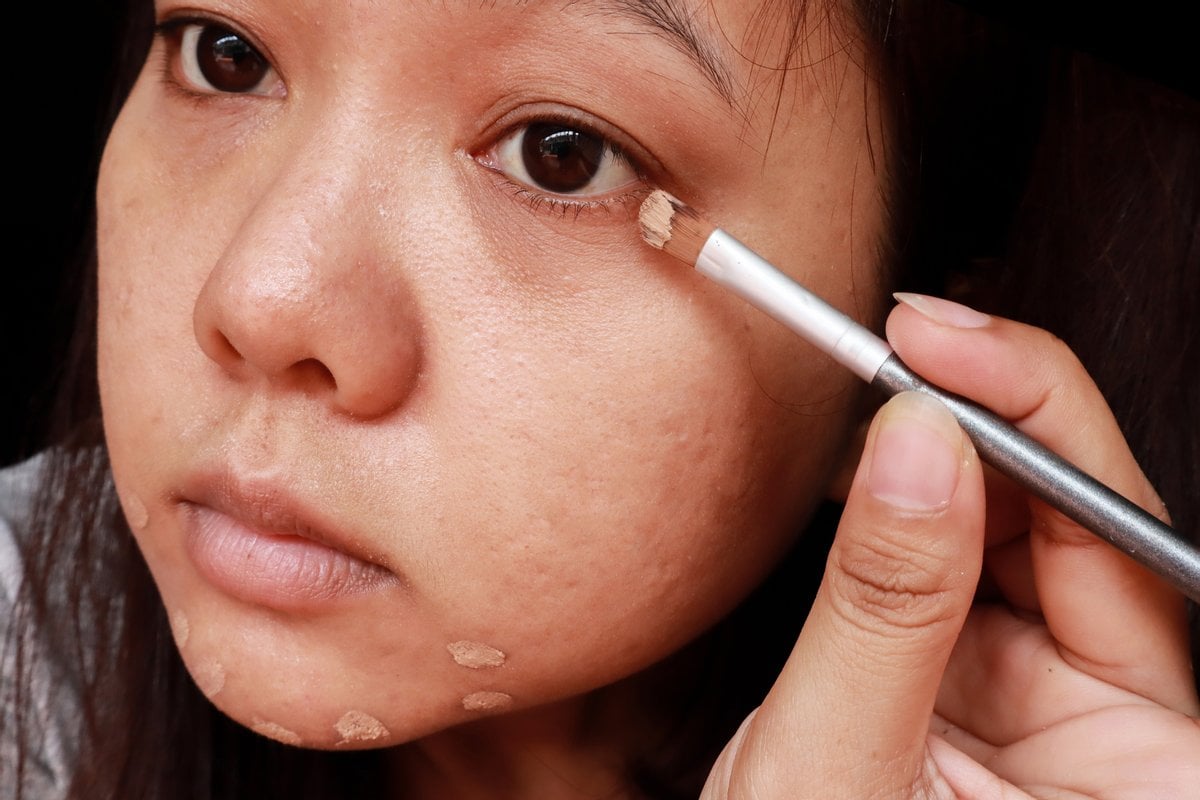
There's nothing worse than looking in the bathroom mirror at 2pm to find your concealer is just NOT being a team player. Like, at all. Your pimples are all flaky, your dark circles somehow look worse (HOW), and the redness around your nose is just there... y'know, doing its thing.
Love that for us.
Watch: Want to skip to the part about how to cover pimples? Check out this acne coverage tutorial by MakeupMeJordyn. Post continues below.
So, what's the go? Are you using the wrong stuff? Are you applying it all wrong? Is it because you used that stupid wand applicator thingo instead of your fingers? It's because of that, hey?
To clear things up, we spoke to celebrity makeup artist Michael Brown who told us where we're making mistakes, and how to fix the problem.
What's the biggest concealer mistake you see on the reg?
When it comes to under eye concealing, apparently most of us have no idea what kinda shade we should be using.
How awkward!
Wanna use your ears instead of your eyes? That's cool. Listen to this episode of You Beauty, where we tell you exactly how to use your concealer.


Top Comments